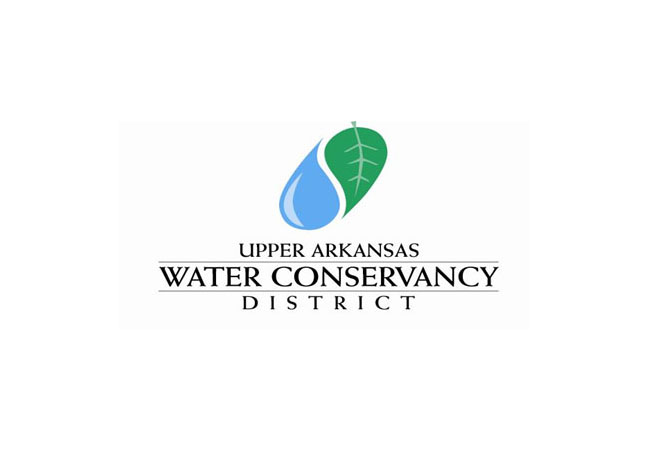In 1979 the Upper Arkansas Water Conservancy District was formed. Since that time, innumerable benefits have been provided to the citizens of the District.
The primary goal of the District is the protection of water rights within the Upper Arkansas River Basin, which involves work and programs not always recognized by the citizens of the District.
Major areas of work include:
- Continuous monitoring and involvement in legislative measures that impact water rights.
- Involvement in water court cases that have the potential to negatively impact Upper Basin water rights.
- Operating umbrella augmentation plans that prevent injury to water rights by making weekly water replacements to effected rivers and streams by out-of-priority uses.
Other areas include:
- Conducting water studies that include groundwater monitoring and water balance studies with the United States Geologic Survey.
- Identification of and development of alluvial water storage.
- Watershed health activities, such as spearheading the Monarch Pass Steep Slope Timber Harvesting Project.
- Water education programs.
Water resource development is essential to an effective water-right protection program. The most obvious and direct benefit of this is the District’s umbrella augmentation plan program. Augmentation is a little-understood water resource concept that was developed in 1969 when the Colorado General Assembly passed legislation fully recognizing the connection between tributary groundwater and surface water.
With this legislation, all groundwater production was brought under and regulated by the prior appropriation system. Basically, this meant that the right to extract ground water for use would be governed by the date of first use.
In an arid state such as Colorado, and in particular Eastern Colorado, there is never enough water to satisfy all legal claims. Thus, priority of use is controlled by the established date of first use, or “First in Time is First in Right.” This legislation prevented most well use except when a “fully consumable” water source was utilized to replace the amount of water used up by the well.
In other words, the well use would have to be augmented with a court decreed “Plan of Augmentation.” The full impact of this was not completely felt until the decision of the Kansas-Colorado Compact lawsuit and the adoption by Colorado in 1995 of the “Amended Rules and Regulations on Tributary Ground Water Use in the Arkansas Basin.”
Fortuitously, the District had filed for an umbrella augmentation plan in 1992, and the plan was approved in 1994. The benefits have been enormous for citizens needing augmentation to use their wells, surface diversions, or ponds within the boundaries of the District’s decreed augmentation areas.
The value of being able to enroll into the District’s augmentation plan and continue to use one’s well is best quantified by cost savings. Typical residential well augmentation requires a source of fully consumable water, storage, an engineering plan, and a water court decree. The typical current cost for such a plan ranges from a low of $80,000 to $150,000 per residence.
The cost per residence with the District’s plan is less than $4,500, a savings per residence of $75,000 to over $145,000. Presently, the District provides augmentation to over 2,000 wells. The vast majority of these are for residential use. This represents a cost savings to District citizens of as much as $290 million dollars.
The additional benefit, which is just as important, is to the rivers and streams in the District. Annually, over 700 acre-feet of water are released to our streams and available to support water rights and protect them from injury. Further benefits are the water infrastructure, maintained and constructed by the District, that supports recreation and the environment. Many area lakes and reservoirs are filled with District-owned and -controlled water rights, such as O’Haver Lake.
The studies and watershed health projects the District has undertaken in its 35 years of existence provide a wealth of knowledge and data for present and future understanding of our water resource and a roadmap to future water development.





